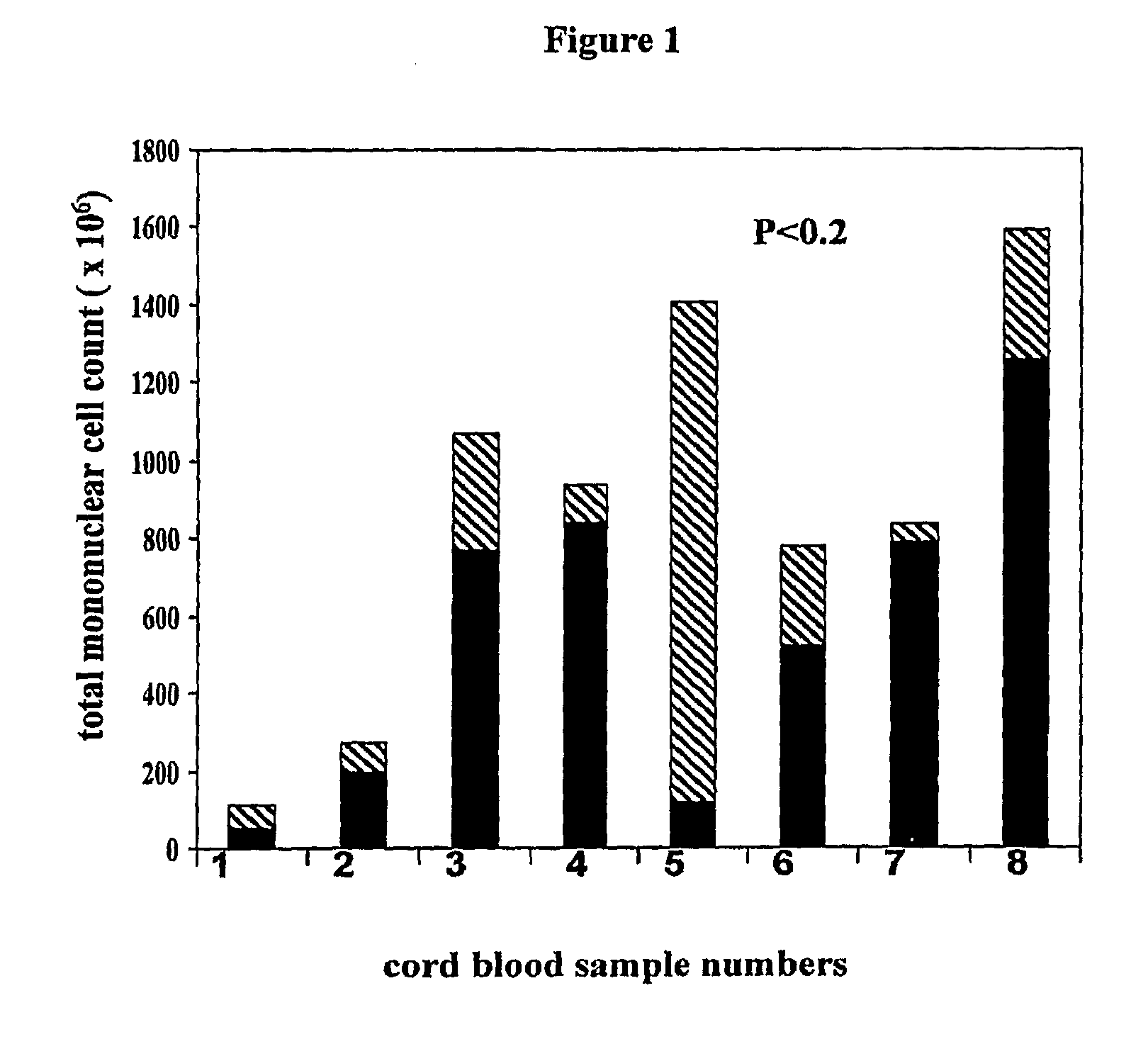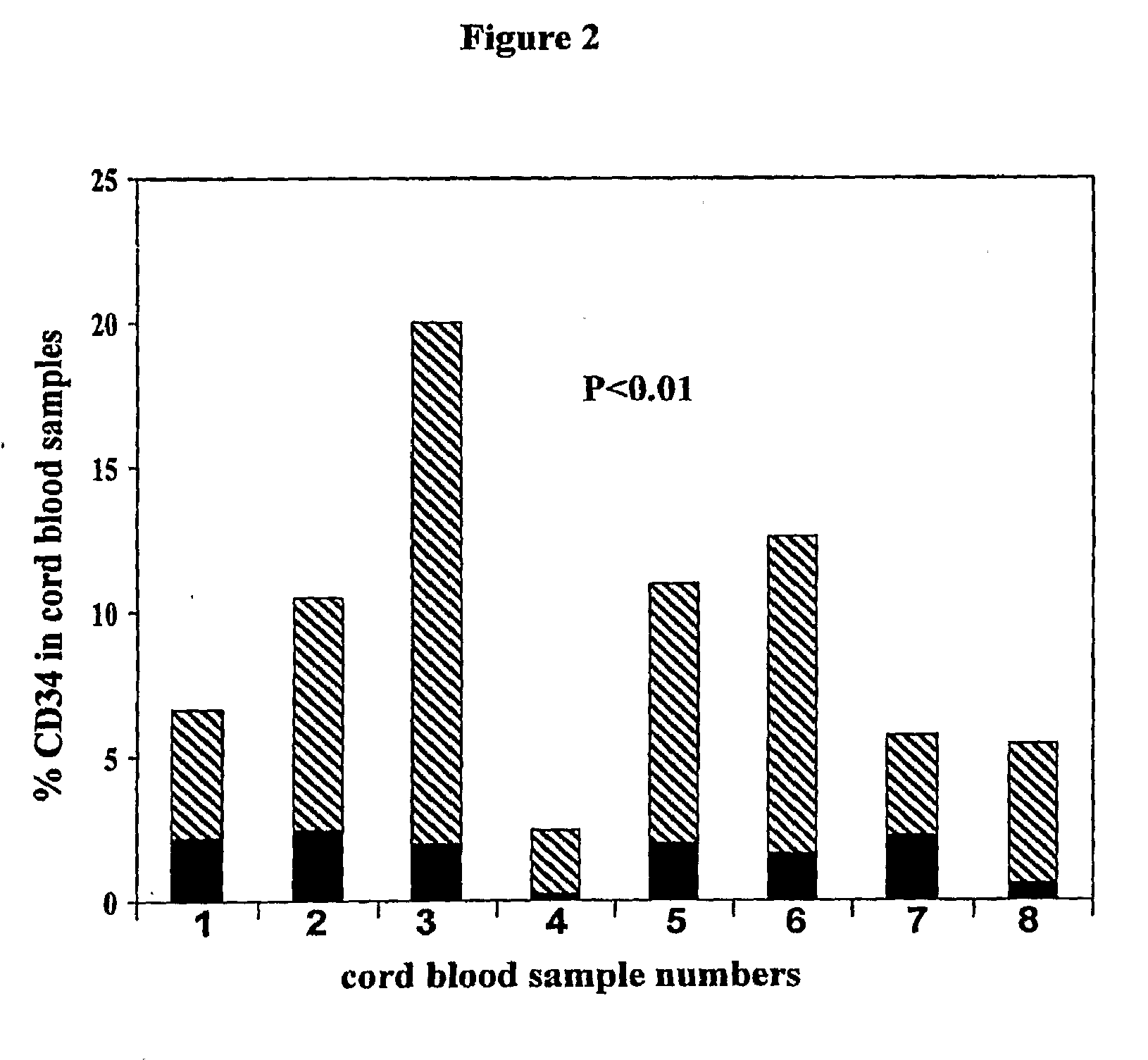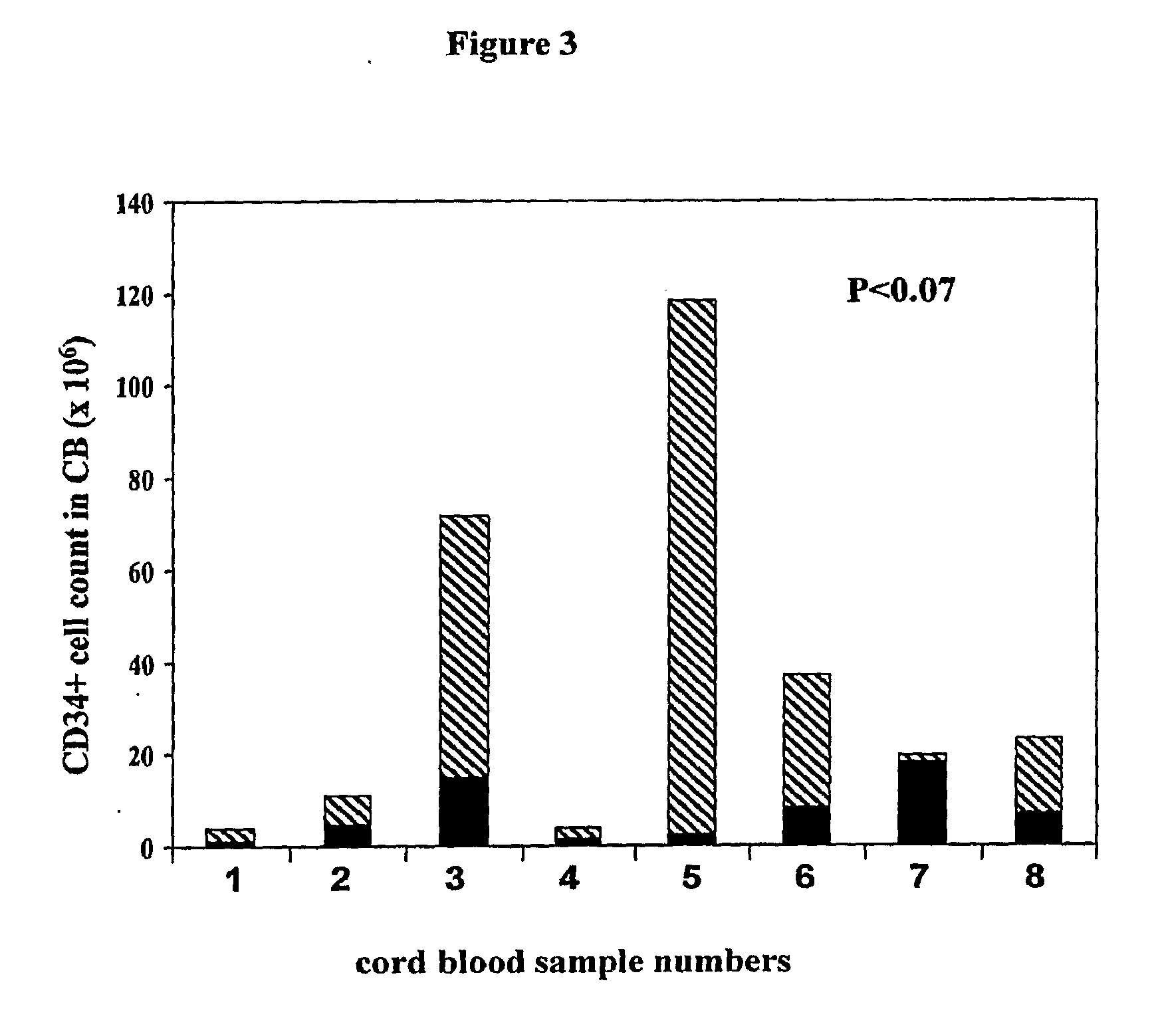Methods for collecting and using placenta cord blood stem cells
a placenta cord and stem cell technology, applied in the field of placenta cord blood stem cell collection and use, can solve the problems of significant delay in post-transplant engraftment of neutrophils and platelets or engraftment failure, significant amount of uncollected cb cells still remain in the placenta, and are discarded, so as to achieve safe long-distance cold transportation and prevent clotting
- Summary
- Abstract
- Description
- Claims
- Application Information
AI Technical Summary
Benefits of technology
Problems solved by technology
Method used
Image
Examples
Embodiment Construction
[0059]In the following detailed description, the methods of the present invention can be performed in a number of different variations, and it is to be understood that other embodiments may be utilized and logical changes may be made without departing from the scope of the present invention. The following detailed description, therefore, is not to be taken in a limiting sense, and the scope of the present invention is defined by the appended claims.
[0060]Although a number of discrete embodiments are described below, it is to be understood that these are merely non-limiting examples, and that any given embodiment of the invention may comprise some of the features of one shown embodiment, and / or some of the features of another shown embodiment.
[0061]A method of collecting cord blood stem cells is described that can comprise or consist of perfusing, for example pulsatile perfusing, an isolated non-exsanguinated or partially exsanguinated mammalian (any species including horse) placenta...
PUM
| Property | Measurement | Unit |
|---|---|---|
| temperature | aaaaa | aaaaa |
| temperature | aaaaa | aaaaa |
| systolic pressure | aaaaa | aaaaa |
Abstract
Description
Claims
Application Information
 Login to View More
Login to View More - R&D
- Intellectual Property
- Life Sciences
- Materials
- Tech Scout
- Unparalleled Data Quality
- Higher Quality Content
- 60% Fewer Hallucinations
Browse by: Latest US Patents, China's latest patents, Technical Efficacy Thesaurus, Application Domain, Technology Topic, Popular Technical Reports.
© 2025 PatSnap. All rights reserved.Legal|Privacy policy|Modern Slavery Act Transparency Statement|Sitemap|About US| Contact US: help@patsnap.com



